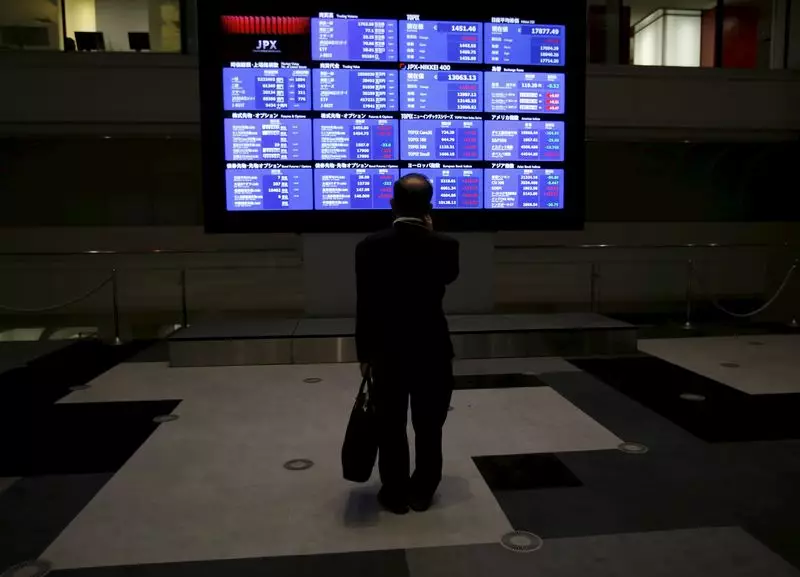Asian stock markets displayed minimal movement in early trading sessions on Monday, a trend expected during the holiday season. With many investors still grappling with the implications of the recent promises of economic stimulus from mainland China, the atmosphere in trade was one of cautious anticipation. Over the weekend, China’s Finance Minister Lan Foan made bold claims of plans to significantly increase government debt, yet the lack of specific figures regarding the size of the stimulus sparked trepidation among market participants about the potential longevity of recent stock market rally trends.
Chinese equities had previously surged following the announcement of what was viewed as the government’s most aggressive economic support plan since the onset of the pandemic. Nonetheless, as trading hovered at lower volumes due to thin participation, concerns grew that momentum could wane. Analysts underscored the risks associated with this ambiguity, noting that without explicit details on fiscal measures, investor sentiment could quickly shift to negativity. A head strategist from National Australia Bank hinted at the probabilistic disappointment the market could face if anticipated clarity failed to materialize when trading resumed after the weekend.
The Asia-Pacific MSCI index, which tracks shares outside of Japan, registered a modest uptick of 0.12%. However, this slight increase came on the heels of a notable 1.7% decline the previous week, signifying a fragile recovery. Japan’s absence from the trading day only compounded existing uncertainties. U.S. stock futures painted a similarly somber picture, with slight declines, most notably in the S&P and Nasdaq sectors, where futures fell by 0.05% and 0.1%, respectively.
Additionally, recent data complicated China’s economic outlook further. On Sunday, reports indicated a surprising dip in consumer inflation figures for September, accompanied by heightened producer price deflation rates. These developments cast a shadow over the market’s sentiment, intensifying calls for more robust stimulus measures to revitalize consumer demand and offset economic stagnation. Consequently, the offshore yuan lost value against the dollar, while the Australian dollar, often serving as a barometer for Chinese economic health, followed suit, further reflecting bearish confidence in the near-term economic trajectory.
While the mood remained subdued across Asian markets, some analysts took the opportunity to adjust their forecasts in light of recent government pledges. Notably, Goldman Sachs revised its projections for China’s real GDP upward from 4.7% to 4.9% for the current year. Still, they maintained a cautious tone, reinforcing the idea that China’s underlying structural challenges—demographic shifts, long-term debt concerns, and the impact of global supply chain transformations—will not be easily resolved by the newly introduced stimulus measures. As these geopolitical and economic dynamics evolve, many investors remain watchful of upcoming data releases, including China’s third-quarter GDP results due this Friday.
Currency markets reflected an overall guarded sentiment as fluctuations moderated. The U.S. dollar remained firm, bolstered by diminishing expectations for aggressive interest rate cuts by the Federal Reserve, especially following last week’s economic indicators pointing toward a resilient labor market and slightly elevated consumer prices. In contrast, the British pound and euro displayed minor declines against their American counterpart, suggesting a broader trend of skepticism among traders concerning European economic health.
In the commodities sector, oil prices took a hit, declining over $1 a barrel as traders reassessed demand forecasts in light of the disappointing inflation data and the vague fiscal plans from China. Prices for both Brent and West Texas Intermediate crude futures saw reductions of 1.39% and 1.4%, pushing them to $77.95 and $74.50 per barrel, respectively. Meanwhile, the price for spot gold also descended slightly, a potential reflection of declining investor confidence in riskier assets amidst the ongoing uncertainty.
As Asian markets brace for the upcoming trading week, the specter of uncertainty looms over investor sentiment. The balance between government stimulus pledges and the underlying economic challenges faced by China will remain a focal point, as traders assess the impacts on both regional and global financial landscapes. The anticipation for forthcoming economic data will further dictate the pace and nature of market reactions, as analysts and investors navigate these complex, shifting dynamics.

